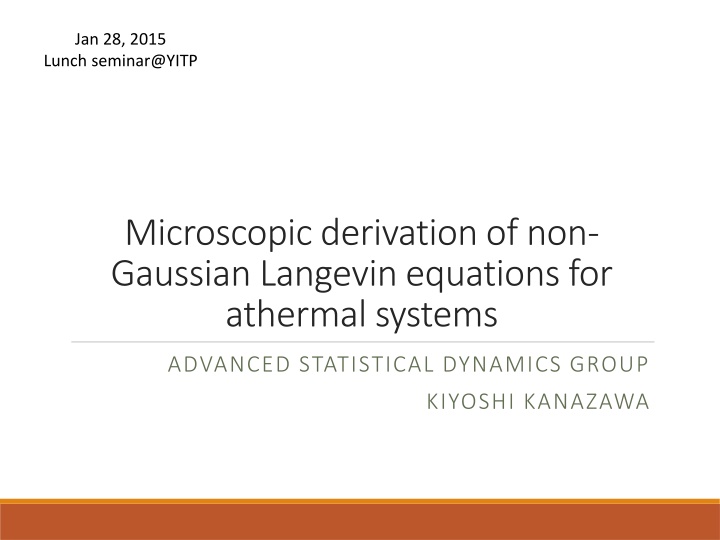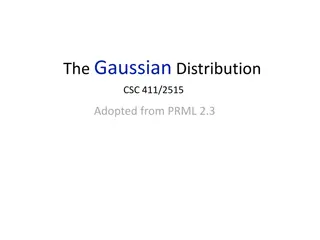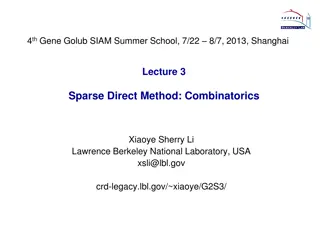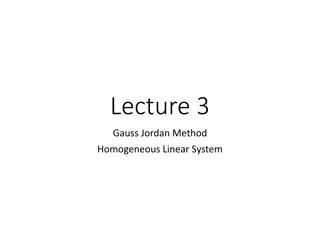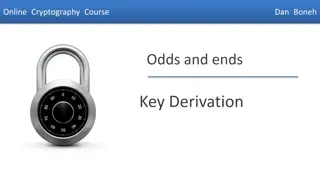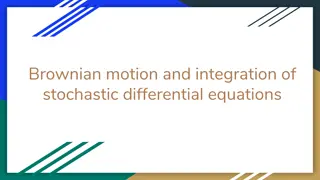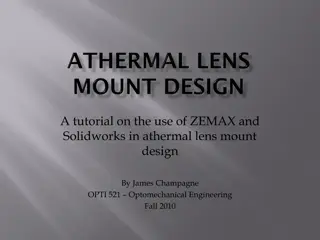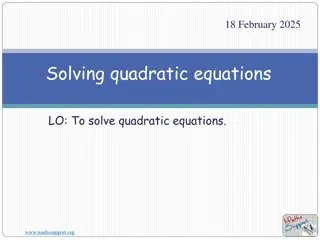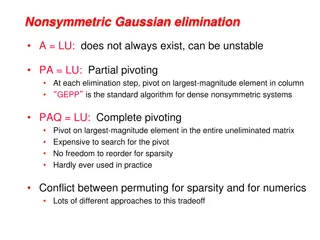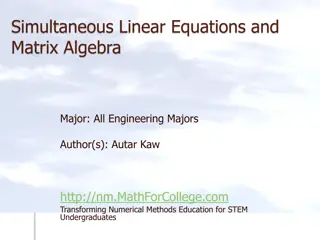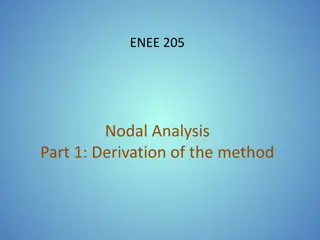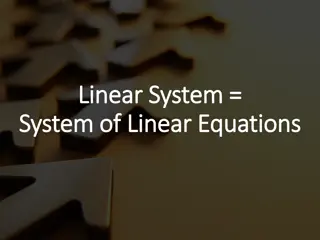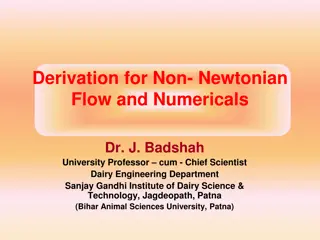Microscopic Derivation of Non-Gaussian Langevin Equations for Athermal Systems
Seminar topic delves into the microscopic derivation of non-Gaussian Langevin equations, focusing on athermal systems like electrical, biological, and granular systems. It explores the origins of athermal fluctuations characterized by non-Gaussianity, shedding light on phenomena such as avalanche noise, active noise, and biological motor fluctuations.
Download Presentation

Please find below an Image/Link to download the presentation.
The content on the website is provided AS IS for your information and personal use only. It may not be sold, licensed, or shared on other websites without obtaining consent from the author.If you encounter any issues during the download, it is possible that the publisher has removed the file from their server.
You are allowed to download the files provided on this website for personal or commercial use, subject to the condition that they are used lawfully. All files are the property of their respective owners.
The content on the website is provided AS IS for your information and personal use only. It may not be sold, licensed, or shared on other websites without obtaining consent from the author.
E N D
Presentation Transcript
Jan 28, 2015 Lunch seminar@YITP Microscopic derivation of non- Gaussian Langevin equations for athermal systems ADVANCED STATISTICAL DYNAMICS GROUP KIYOSHI KANAZAWA
Fluctuation in small systems laser bead Experimental development (e.g., optical tweezers) Manipulation & Observation of small systems Single particle ideal gas Thermodynamics for a single particle
Gaussian Langevin Equation (GL) White Gaussian noise ? Motion of a fluctuating bead in water The GL Eq. is universal and simple A foundation for thermodynamics
My interest: Athermal fluctuation Non-Gaussian Langevin Eq. (NGL) Athermal fluctuation Originating from non-eq. environments Characterized by non-Gaussianity Electrical, biological, granular systems ? ? ??= ? ? + 2?? ??+ ??? White non-Gaussian noise EX1) Avalanche noise EX2) Active noise Reverse voltage on diodes Chain-reaction Biological motor Fluctuation induced by ATP
Goal of this talk: Microscopic Derivation of NGL Eq. Review on a derivation of GL Eq. Review of a derivation of GL Eq. The central limit theorem (CLT) Emergence of Gaussian noise Our study on a derivation of NGL Eq. Why is the CLT violated for non- equilibrium systems? 1. Microscopic derivation of NGL Eq. 2. Application of a granular example KK, T.G. Sano, T. Sagawa, H. Hayakawa, to appear in PRL.
Derivation of GL Eq.: Example Rayleigh Piston Piston in rarefied gas linearized Boltzmann Eq. Markov jump process Collision discontinuous velocity jump of Piston Strong environmental correlation non white noise ? = large energy outflow to gas ? = small energy inflow from gas Heavy piston limit ? 1. Correlation is renormalized only into viscosity 2. Fluctuation is reduced to white noise 3. Fluctuation is reduced to Gaussian (the CLT) ? 0 ?/? 1
General derivation of GL Eq.: the system size expansion Weak coupling A single stochastic bath described by Markov jump noise Weak coupling(e.g., ? =mass ratio The following simplification is performed 1. Correlation is renormalized into viscosity 2. Fluctuation is reduced to white noise 3. Fluctuation is reduced to Gaussian (the CLT) small parameter Markov jump noise ( -independent) Universality in the weak coupling limit Emergence of the NGL Eq. Simplification 1 & 2 are applicable, but simplification 3 is not applicable. ? 0
Where is the CLT applied in the system size expansion? CLT Simple sum of independent and identically distributed (i.i.d.) random variables 1 ? ? ?? Gaussian random variable ? ?=1 Can we regard collisions as many i.i.d. variables? Yes, we can if ?? ??(??:relaxation time, ?? collision interval) The CLT in the expansion weak friction Weak-coupling for a single bath Weak friction This condition can be violated for systems with multiple baths
An asymptotic derivation of the NGL Eq. System associated with multiple baths Assumption 1. Weak coupling ? 0 2. Coexistence of both noise 3. Large thermal viscosity ? ?? ? is ?-independent -independent Assumption 1 Environmental correlation disappear (Reduction to white noise) Assumption 3 the CLT is violated ? thermal viscous coefficient The NGL Eq. is derived ?? Athermal viscous coefficient= ?(?)
Violation of the CLT (a) A single bath Automatically weak friction Sufficiently frequent fluc. during relaxation the CLT is applicable (b) Multiple baths Origins of fluc. and diss. are separeted Not sufficiently frequent fluc. during relaxation the CLT is not applicable
Granular motor: Modeling A non-eq. Rayleigh Piston Linearized Boltzmann Eq. Assumption 1. Weak coupling ? ?/? 1 2. Coexistence of both noise 3. Strong thermal viscosity ? ?? -independent ,
Granular motor: Results When the granular velocity dist. is ? ? = ? |?|/?0/8??0 The exact distribution of the rotor s angular velocity 3 Numerical data are consistent with our result but not with the Gaussian approximation
Conclusion A derivation of the GL. Eq. A derivation of the NGL. Eq. 1. Weak coupling 2. Coexistence of both fluctuations 3. Strong thermal friction Strong dissipation Application to a granular 1. An exactly solvable model 2. Agreement with simulation KK, T.G. Sano, T. Sagawa, H. Hayakawa, to appear in PRL (arXiv: 1407.5267).
